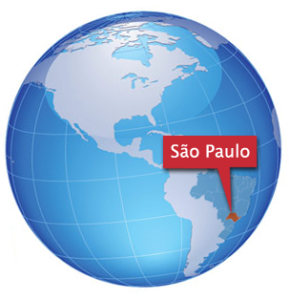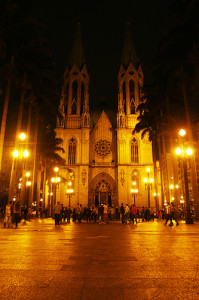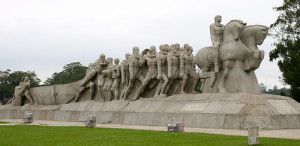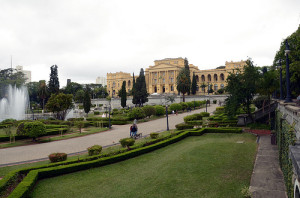 São Paulo will host the SciELO 15 years Conference. It is a city that always amazes the visitor who comes from the first time, or who returns many times and keeps unveiling the subtleties offered by the place.
São Paulo will host the SciELO 15 years Conference. It is a city that always amazes the visitor who comes from the first time, or who returns many times and keeps unveiling the subtleties offered by the place.
Participants of the SciELO 15 Years Conference will be located at the central area of the city, which will certainly facilitate to learn more about this megalopolis, one of the most populated cities on the planet, according to IBGE (Brazilian Geography and Statistics Institute), which has a population equivalent to 10.9 million inhabitants. And if one considers the metropolitan region surrounding the capital, it comes to a total of 19 million inhabitants. Capital of the state of São Paulo, in southeastern Brazil, it has a tempered tropical climate, and it is one of the most important financial centers in Latin America, and a national economic and cultural reference.
SciELO was also born in Sao Paulo and then spread into America; therefore it is an integral part of this movement that characterizes the city: a place of development, meetings of different people and ethnic groups. Though there is also in the streets a wealth brought from miscegenation and mixing of cultures, something that has been perpetuated since its foundation, more than five centuries ago. A way of living at the same time intense and tense, but the balance in a dynamic pace, has a sign of effervescence of ideas in the arts and sciences fields.
The cuisine is also a strong point of the city. One can get to known restaurants – fancy or very simple – over the various neighborhoods, offering to the public – from here and abroad – from the typical Brazilian feijoada as other dishes not necessarily from Brazilian origin. Consider, for example, the Japanese cuisine, so greatly appreciated in São Paulo. Another example is the Arabic cuisine, also not far behind in quality.
Although the city does not offer to its residents and visitors many landscapes nor the calm of a place to rest or relax – rather, it is the agitation that generally prevails in the daily life of São Paulo – worth checking in daily intervals that the city creates and recreates, as a mean to vent on its architecture, places not always considered tourist sights, however curious and interesting, to be seen and experienced. Neighborhoods such as Liberdade, with a significant concentration of oriental culture, Vila Madalena, for the art on display and commerce of artists and craftsmen; Benedicto Calixto Square with objects and antiques; Parque do Carmo in Itaquera, bringing together artists and outdoors. The Mercado Municipal de São Paulo, and Estação da Luz, in the central city. There are also festivals and fairs that take place throughout the year, with the effective participation of many people.
The city of São Paulo, founded on January 25th, 1554, by Jesuit priests – including Manuel da Nóbrega and José de Anchieta – had its name inspired by the Apostle Paul of Tarsus, on a date that celebrates his conversion to Christianity. The JesuitCollege created during the foundation of the city exists still today, the Patio do Colegio or Museu Anchieta and can be visited in the Historic Center of São Paulo.
In its history, São Paulo received – and continues to receive – a huge amount of immigrants: since the times of Colonial Brazil, with the Portuguese and Africans in the country, and much later, in the late nineteenth century, and also due to the wars in Europe in the twentieth century. They came here Italian, Spanish, Arabic, Lebanese, Syrian, German, Chinese, Japanese, Lithuanians, Armenians, and Koreans, among many others.
Aside immigrants, São Paulo also has a significant inward flow of immigrants from all parts of the country, but especially from the North and Northeast regions, in search of jobs and other opportunities for integration in the urban space, which also contributes for its aspect of diversity and social wealth.
Preceding the SciELO 15 Years Conference, the blog SciELO in Perspective will gradually inform on the tour options in São Paulo. What the visitor can learn …
The tip for this inaugural issue of SciELO in Perspective are the indications of museums and historical monuments in the city, from Pátio do Colégio, Museu do Ipiranga, Catedral da Sé, Museu de Arte Sacra, Estação Pinacoteca, Jardim Botânico de São Paulo, to the most recente ones, such as Monumento às Bandeiras, Memorial da América Latina, Museu da Língua Portuguesa, Museu de Arte de São Paulo (MASP), Museu de Arte Moderna de São Paulo (MAM), Museu Brasileiro da Escultura (MuBE), Museu da Imagem e do Som (MIS), Museu Lasar Segall, Museu do Futebol, and so on.
Como citar este post [ISO 690/2010]:















Recent Comments